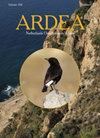白尾鹰Haliaeetus albicilla在波罗的海沿岸国家Phalacrocorax Carbo Sinensis大Cormorant殖民地的发生和行为
IF 1.3
4区 生物学
Q3 ORNITHOLOGY
引用次数: 3
摘要
自20世纪80年代以来,波罗的海白尾鹰种群的恢复是一个保护成功的故事。然而,这种捕食者在沿海和湖泊地区的重新建立似乎会在繁殖季节影响到Phalacrocorax carbo大Cormorants。我们整理了已发表和未发表的白尾鹰发生和与Cormorant群体相互作用的记录,以及Cormorant抗捕食者反应和对Cormorant繁殖性能影响的记录。我们发现了直接影响(主要是盗贼寄生、对卵子和后代的捕食)和间接影响(主要促进海鸥和乌鸦的巢穴捕食)的证据。狩猎白尾鹰的反复干扰也被认为会引发巢址选择的变化,导致群落完全废弃,并导致繁殖者的区域重新分配。然而,也有观察到与在Cormorant群落内繁殖的白尾鹰“无问题”共存。有一些证据表明,随着白尾鹰数量的不断增加,Cormorants的筑巢机会可能会受到进一步限制,我们认为,在某些地区,这将限制Cormorant繁殖种群的分布和规模。本文章由计算机程序翻译,如有差异,请以英文原文为准。
Occurrence and Behaviour of White-Tailed Eagles Haliaeetus albicilla in Great Cormorant Phalacrocorax Carbo Sinensis Colonies in Countries around the Baltic Sea
The recovery of the Baltic White-tailed Eagle Haliaeetus albicilla population since the 1980s is a conservation success story. However, the re-establishment of this predator in coastal and lake areas appears to affect Great Cormorants Phalacrocorax carbo during the breeding season. We collated published and unpublished records of White-tailed Eagle occurrence and interactions with Cormorant colonies as well as records of Cormorant anti-predator responses and effects on Cormorant breeding performance. We found evidence for immediate direct effects (mainly kleptoparasitism, predation of eggs and offspring) and indirect effects (facilitating nest predation by mainly gulls and corvids). Repeated disturbance from hunting White-tailed Eagles was also inferred to trigger changes in selection of nest sites, to cause complete abandonment of colonies and lead to regional redistributions of breeders. However, there are also observations of ‘unproblematic’ coexistence with White-tailed Eagles breeding inside Cormorant colonies. There is some evidence to suggest that nesting opportunities for Cormorants may become further restricted as White-tailed Eagle numbers continue to increase, and we argue that this – in some regions – will impose limitations on the distribution and size of breeding populations of Cormorants.
求助全文
通过发布文献求助,成功后即可免费获取论文全文。
去求助
来源期刊

Ardea
生物-鸟类学
CiteScore
2.10
自引率
0.00%
发文量
49
审稿时长
>12 weeks
期刊介绍:
Ardea is the scientific journal of the Netherlands Ornithologists'' Union, and is published since 1912. The journal welcomes manuscripts reporting significant new findings in ornithology, in particular those covering the ecology, life history, and evolution of birds, and including sound descriptive work. Ardea publishes Original research papers, Short notes and Book reviews. In addition to the regular three issues per year, Ardea publishes specials that contain conference or workshop proceedings (produced on request).
 求助内容:
求助内容: 应助结果提醒方式:
应助结果提醒方式:


